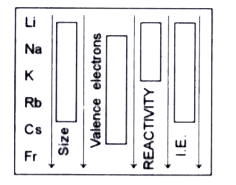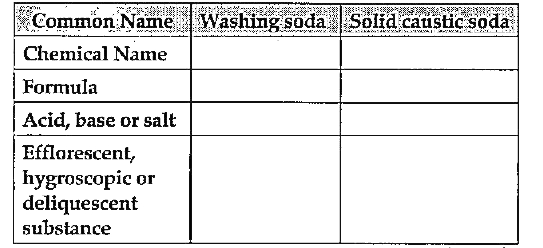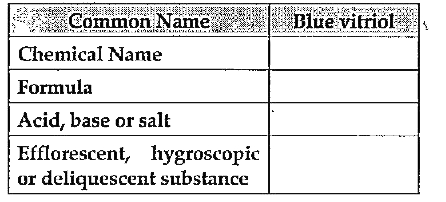Complete the given table :

Video Solution
Text Solution
(i) The homologue with smaller number of C atoms in its molecule has lower melting point. Therefore, compound X with lowest melting point has the smallest number of carbon atoms in its molecule. (ii) The homologue with maximum number of C atoms in its molecule has the highest melting point. Therefore, compound Z with the highest melting point has the maximum number of carbon atoms in its molecule.
|
Updated on:21/07/2023
Topper's Solved these Questions
- BOOK - ICSECHAPTER - ORGANIC CHEMISTRY EXERCISE - IMPORTANT QUESTIONS FOR REVISION79videos
ORGANIC CHEMISTRY
- BOOK - ICSECHAPTER - ORGANIC CHEMISTRY EXERCISE - IMPORTANT QUESTIONS FOR REVISION (TRUE OR FALSE)6videos
ORGANIC CHEMISTRY
- BOOK - ICSECHAPTER - ORGANIC CHEMISTRY EXERCISE - QUESTIONS55videos
ORGANIC CHEMISTRY
- BOOK - ICSECHAPTER - MOLE CONCEPT AND STOICHIOMETRYEXERCISE - ASSERTION AND REASON BASED QUESTIONS1videos
MOLE CONCEPT AND STOICHIOMETRY
- BOOK - ICSECHAPTER - PART B (STIOCHIOMETRY) PRECENTAGE COMPOSITION - EMPIRICAL & MOLECULAR FORMULA CHEMICAL EQUATION CALCULATIONSEXERCISE - Questions (G : Chemical Equations)17videos
PART B (STIOCHIOMETRY) PRECENTAGE COMPOSITION - EMPIRICAL & MOLECULAR FORMULA CHEMICAL EQUATION CALCULATIONS
Similar Questions
The given table enlists the examples of monoecious and dioecious plants
Type of plantsMonoeciousDioeciousExampleiii
The information in which alternative completes the given table?View SolutionComplete the following table :
 View Solution
View SolutionComplete the following table :
 View Solution
View SolutionComplete the following table :
 View Solution
View SolutionComplete the following table :
 View Solution
View SolutionComplete the following table :
 View Solution
View SolutionComplete the following table :
 View Solution
View SolutionComplete the following table :
 View Solution
View SolutionComplete the following table:
 View Solution
View SolutionComplete the following table:
 View Solution
View Solution

